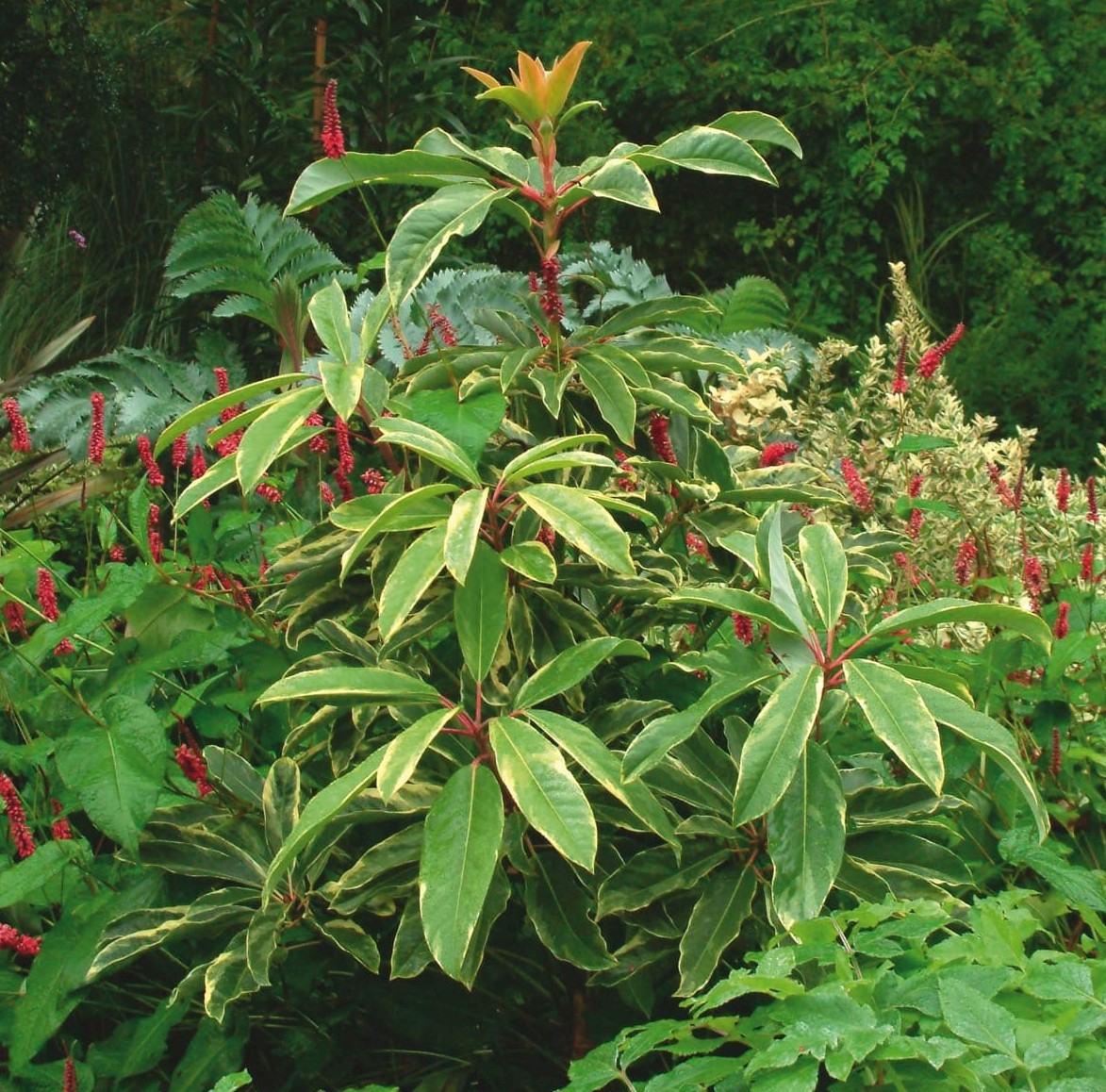Daphniphyllum teysmannii
Credits
Article from New Trees by John Grimshaw & Ross Bayton
Recommended citation
'Daphniphyllum teysmannii' from the website Trees and Shrubs Online (treesandshrubsonline.
Genus
Tree to 15 m, dbh 0.7 m. Bark smooth, yellowish to greyish brown. Leaves alternate, often concentrated on new growth, 6–15 cm long, narrowly oblong to elliptic or oblanceolate, leathery, upper surface lustrous, deep green, lower surface glaucous, 7–15 inconspicuous secondary veins on each side of midrib, margins entire, weakly revolute, apex acute to acuminate; petiole usually reddish, (2–)4–5 cm long; stipules linear, caducous. Male inflorescences racemose, 3–4 cm long with 10–15 flowers. Female inflorescences racemose, 2–6 cm long. Male flowers, calyx four-lobed (rarely three- or five-lobed); corolla absent; stamens 4–10. Female flowers, sepals three to five, persistent; corolla absent; styles three to four with recurved stigma. Drupes black, ellipsoid, 0.8–1.4 cm long. Flowering May to June (Japan). Noshiro 1999. Distribution JAPAN: Honshu, Kyushu, Ryukyu Is., Shikoku; SOUTH KOREA. Habitat Coastal slopes. USDA Hardiness Zone 7–8. Conservation status Not evaluated. Illustration NT305, NT307. Taxonomic note The original spelling of the specific epithet is teysmannii, but it is often misspelt teijsmannii, following the Dutch convention. It commemorates the Dutch botanist Johannes Teijsmann (1809–1882) who also has a genus of palms named after him, Johannesteijsmannia.
Daphniphyllum teysmannii comes from southern Japan and some Korean islands (but not Ullung-do, according to Bleddyn Wynn-Jones: pers. comm. 2007), where it often grows in exposed coastal situations as a shrub or small tree. As an adaptation to this harsher environment it has short, thick leaves, which senesce to a rich red and can remain on the tree for some time in this state (Crûg Farm Plants 2007–2008). Red coloration is found in the stems and petioles, while the active leaves are bronze-green. It is tolerant of dry conditions, though it will remain rather short, and of salt spray – with the result that it is often planted on the verges of Japanese motorways (B. Wynn-Jones, pers. comm. 2007). An early collection was made on Sohuksan Island, off the coast of South Korea, in September 1985, by a US National Arboretum expedition (KE 3550, NA 56544). Here the trees were up to 10 m tall, growing among boulders, and resisting frequent typhoons (P. Wharton, pers. comm. 2007). No material from this expedition has been traced in our research, but it is said to be hardy in Zone 7 winter temperatures (Hogan 2008). A plant from a 1997 collection on Shikoku is growing slowly in a rather dry place at Crûg Farm, but appears quite hardy there (B. Wynn-Jones, pers. comm. 2007).



